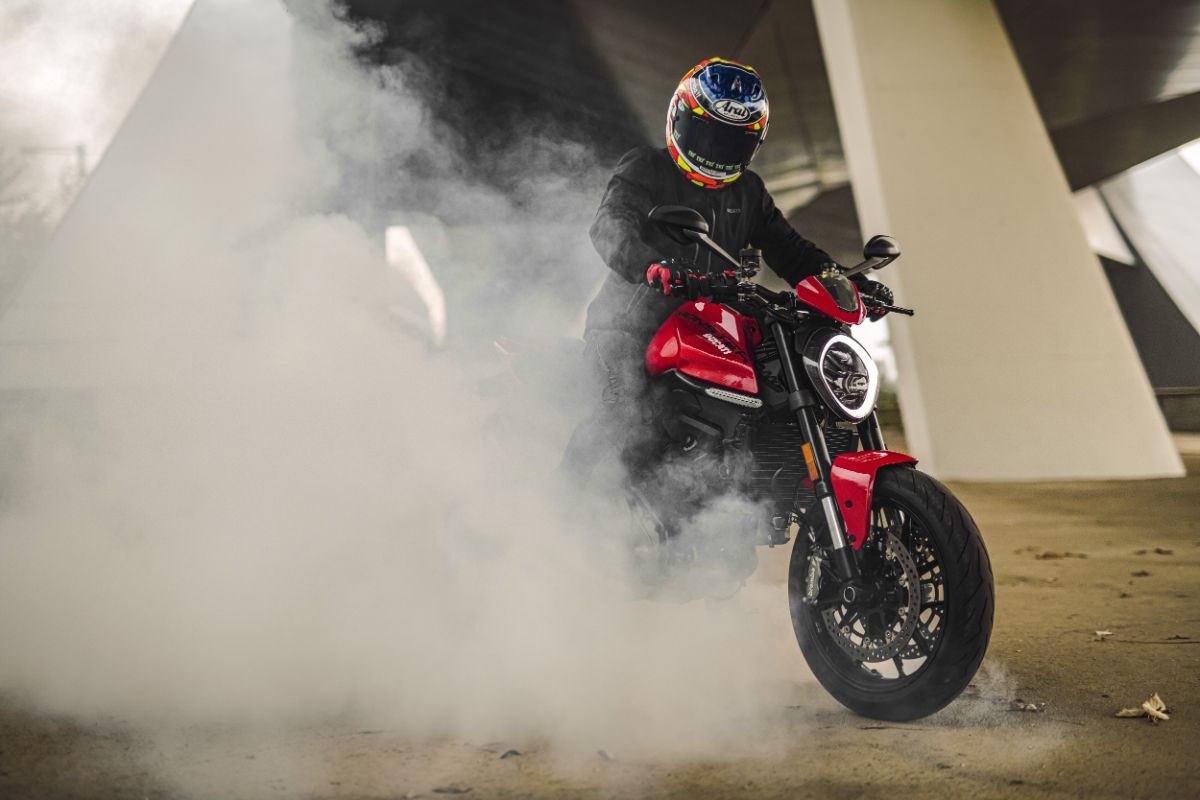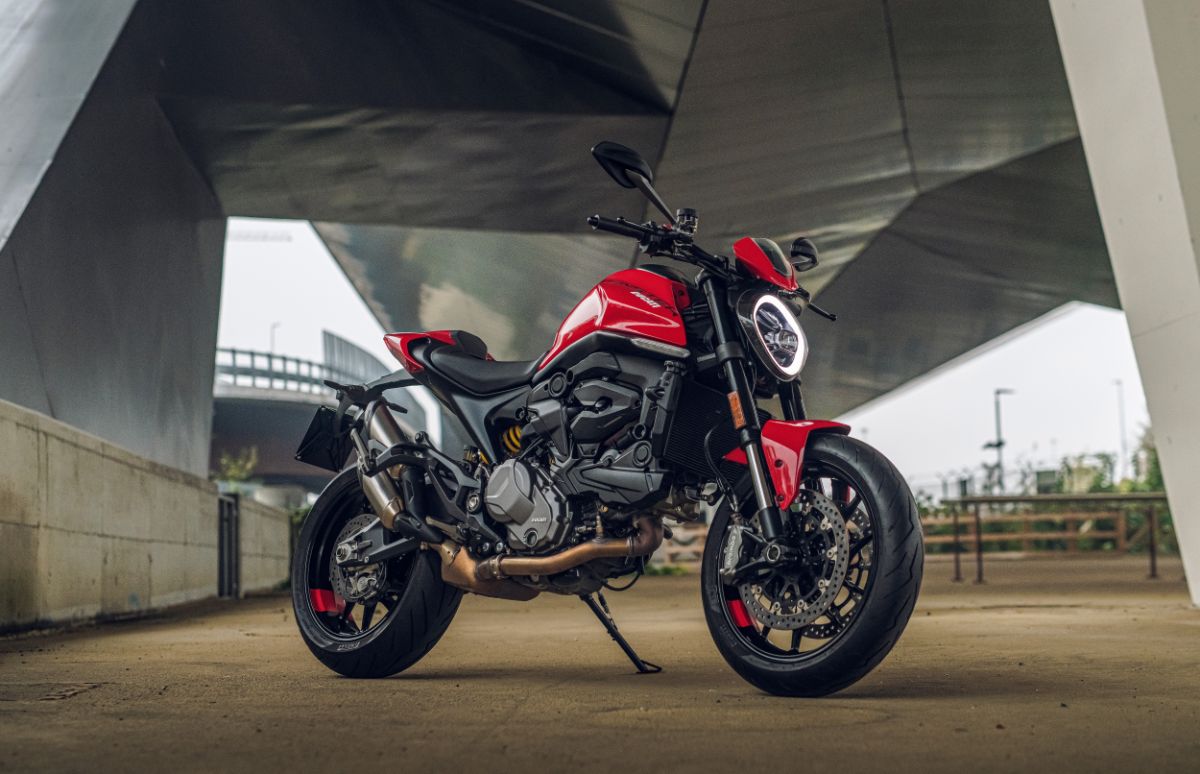What started out as a bit of a cheap and cheerful entry level model back in 1993 has become the company’s best-selling model of all time and, while other Ducatis have grabbed the headlines over the years, the Monster continues to be the backbone of the range.
So, to celebrate, we’ve delved into the archives to look back on this unsung hero of the Ducati line-up. It’s been quite a journey…
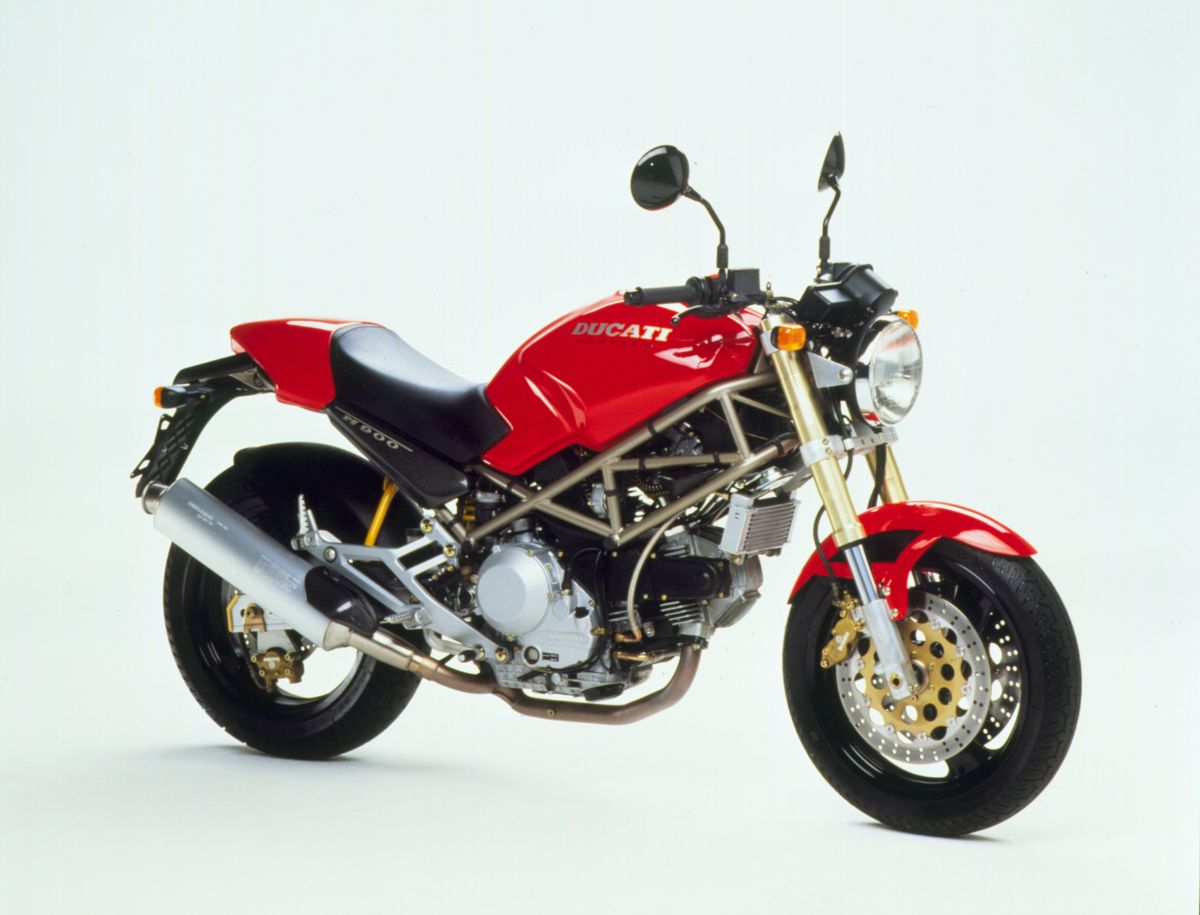
In the beginning…
To understand the Monster’s roots, it helps to understand where Ducati was back in the early 1990s.
The brand had been in the doldrums in the early ‘80s and was under the ownership of the Cagiva group, which had quite a reputation for zingy two-stroke 125s and had enjoyed some success at the Dakar rally with its Ducati engined Elefant, but sales were hard to come by and the inexorable rise of high-performance Japanese machines was tightening the screws on the whole Italian motorcycle industry.
Ducati’s technology was dated. The air-cooled L-twin motors could be traced back to the early 1970s and build quality was patchy at least. Cagiva had been fairly active in racing, winning a few Grands Prix with the gorgeous V4 500cc machine, and when the new Superbike World Championship came along in 1988, it provided an opportunity to showcase the Ducati brand as well.
Ducati’s engineers had built a four-valve, water-cooled, engine for Formula One and endurance racing, and the introduction of the production-based superbike series saw the 851 made available to the public in limited numbers. Ducati was supremely successful in the new series, but although they’d won the first three superbike world championships of the 1990s, that success wasn’t transferred to showroom sales.
By 1992, the Ducati range consisted of the exotic 851 and 888 – expensive homologation models considered fragile and less good on the road than the Japanese competition – and the aging supersport (SS) range powered by the old air-cooled engine.
The Monster was an amalgamation of those two model lines, placing the 900SS’ two-valve desmo engine in the 851 superbike’s steel trellis frame and adorning it with cycle parts also raided from the parts bin. It didn’t seem like such a big deal at the time, but the original Ducati M900 Monster was greater than the sum of its parts. A legend was born.
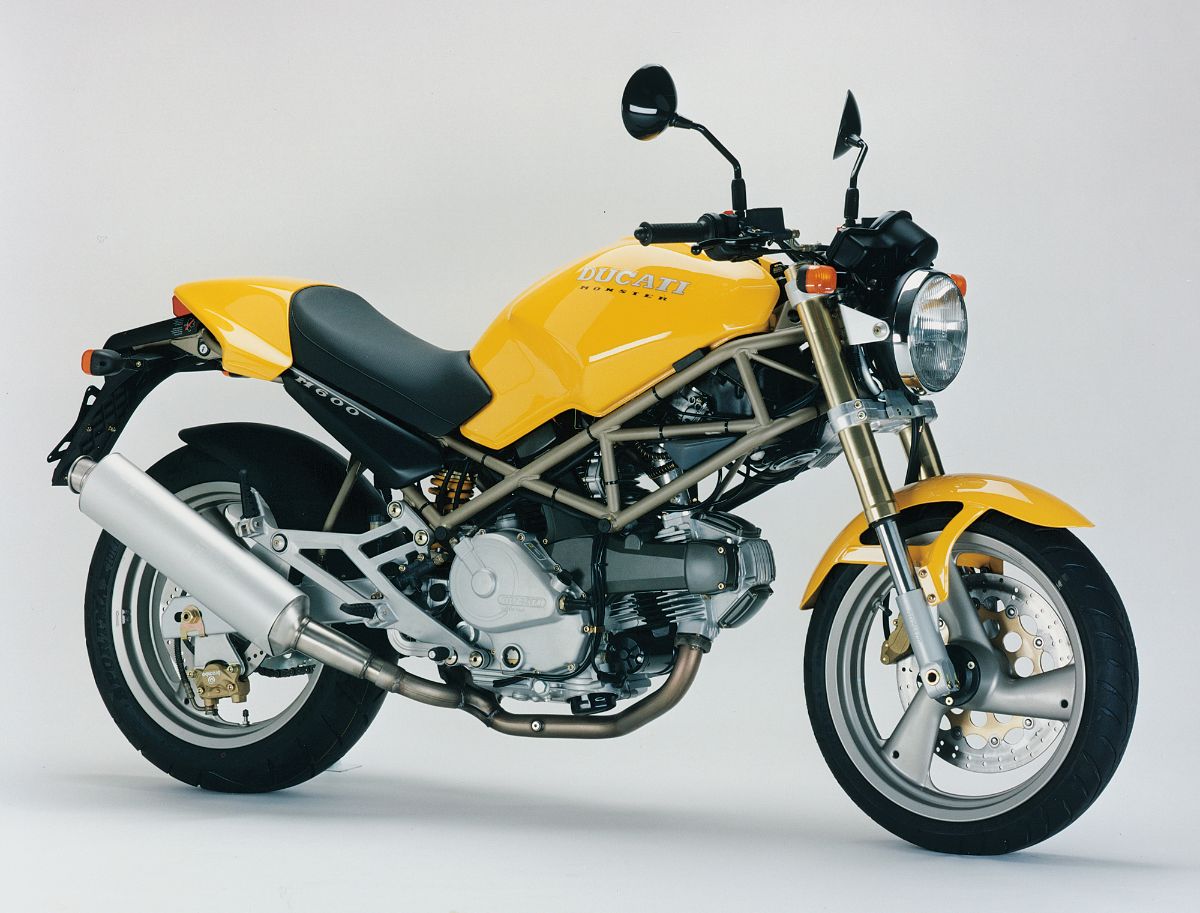
Argentine designer Miguel Galluzzi had a vision of a motorcycle which had little more than a saddle, motor and wheels. Stripped down and basic, the first bikes didn’t even have a rev counter, the Monster was the epitome of the ‘iron horse’ concept and gave a pure riding experience. They were also competitively priced, which suddenly gave Ducati mass market appeal for the first time. The Monster had been cheap to develop and build, but sold well and proved a godsend for a business which had famously suffered cashflow problems over the years. Quick to cash in on the success, the Monster range was quickly expanded.
Little Monsters…
With a claimed 75bhp, the 904cc M900 was hardly a ripsnorter but there was still a desire for even more inexpensive versions. The original was cheap, at least by Ducati terms, but at £7500 it still carried a premium over most Japanese bikes of the time.
In an era when insurance prices and licence categories were banded by engine capacity, the M900 was quickly joined by the M750, utilising the 60bhp 750SS engine, a 583cc M600 and even a 43bhp, 400cc, version designed to fit in with Japanese licence laws. All versions used the same 851-derived frame as the original M900, although suspension and brakes were more basic to keep the costs down.
Millennium Monsters
Ducati went from strength to strength in the 1990s. The iconic 916 superbike was launched in 1994, with the 748 derivatives also selling well. The company was almost unbeatable in production bike racing, helped in no small part by Carl Fogarty’s four world superbike titles, but it was the Monster which kept the wheels turning. Despite remaining largely unchanged for the decade, it continued to sell strongly, but a major change would come in 2001 with the introduction of the S4.
The beauty of the original M900 and its smaller siblings had been the simplicity. The air-cooled, two-valve engines were a throwback to simpler times, but customers were looking for more performance, while tightening emissions laws meant it was increasingly difficult to reengineer air-cooled engines to meet modern standards
The S4 mated the 916’s water-cooled four-valve engine to an upspecced Monster chassis, featuring better brakes and suspension. The more basic models were updated too. The 600 became the 620, with a 35cc bigger engine and fuel injection, while the blacked out ‘Dark’ versions featured matt black finishes, which were popular at the time.
The S4 marked the Monster’s move upmarket. The S4R featured an even more powerful (113bhp) superbike-derived engine and the single sided swingarm, which would feature on many Monsters of the time. The early 2000s Monsters may have moved away from the simplicity of the originals, but they had evolved into the kind of brutal machines the name alluded to.
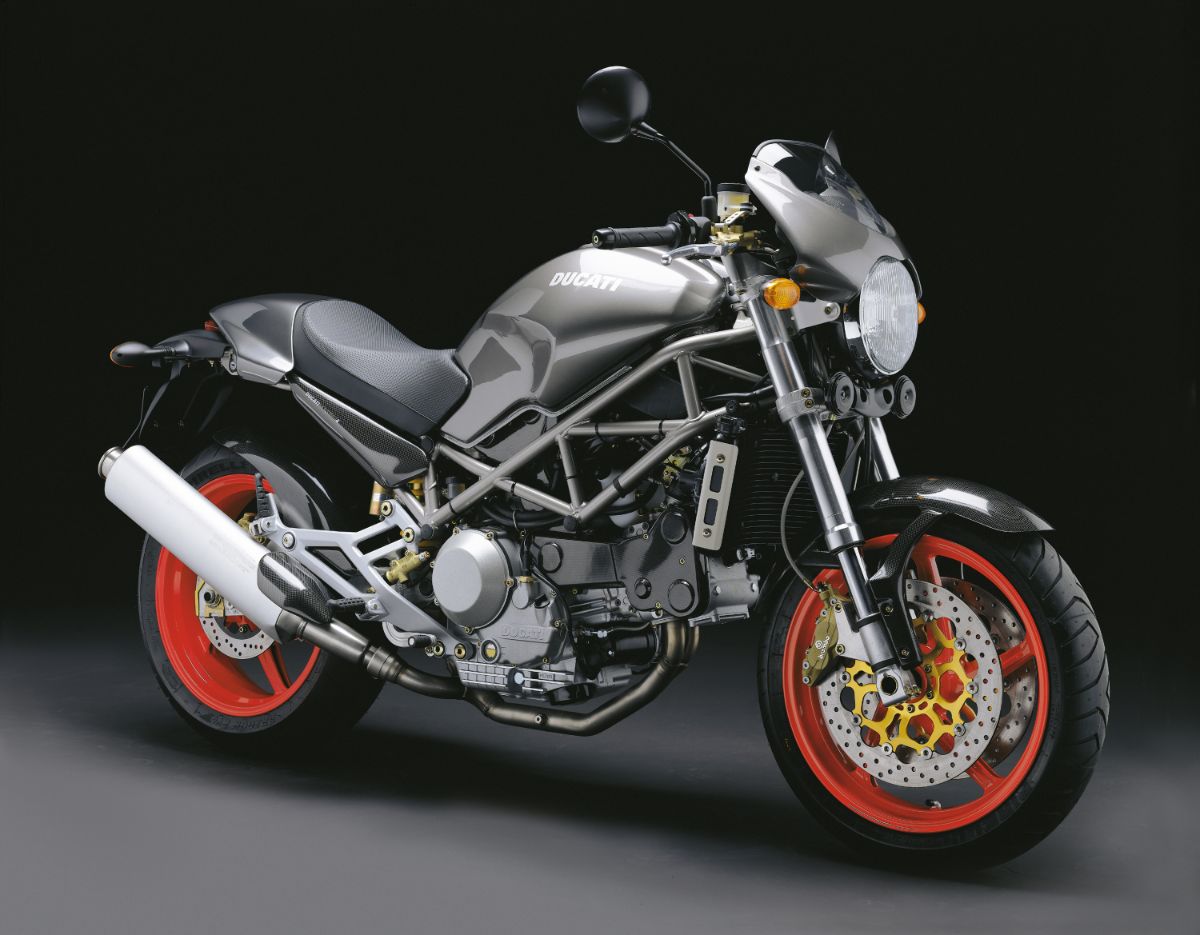
Despite this, the more basic Monsters continued to be most popular. Part of the appeal of the Monster range has always been its accessibility, being easy for shorter and less experienced riders to get on with, while still offering something for veteran bikers. By 2008 the model represented around half of Ducati’s production, with the new generation Monster 696 becoming the entry level model. This sold 12,000 units in its first year of production, the most of any Ducati at the time. With the Streetfighter being introduced in 2009 as Ducati’s supernaked offering, the Monster range was pared back and focussed again on the traditional air-cooled designs. It still offered a wide range of options, from the entry level 696, through to the mid-range 796 and the biggest 1100, which was replaced by an all-new liquid-cooled 1200 for 2013.
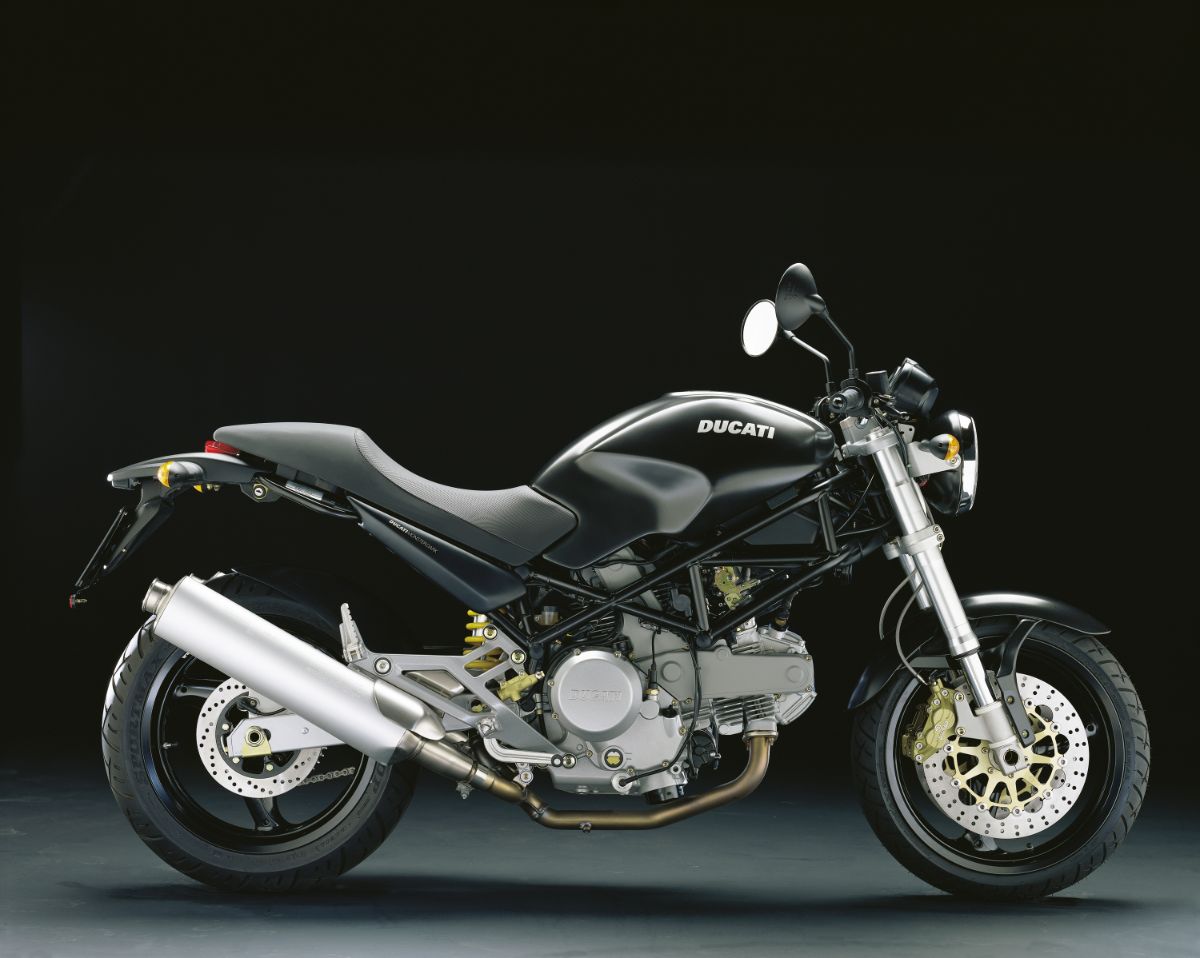
With the original Streetfighter dropping out of the range, the Monster 1200S of 2016 became the company’s top naked machine with 160bhp and a spec sheet which included the latest electronics and high-end chassis components from the likes of Brembo and Ohlins. The Monster had come a long way.
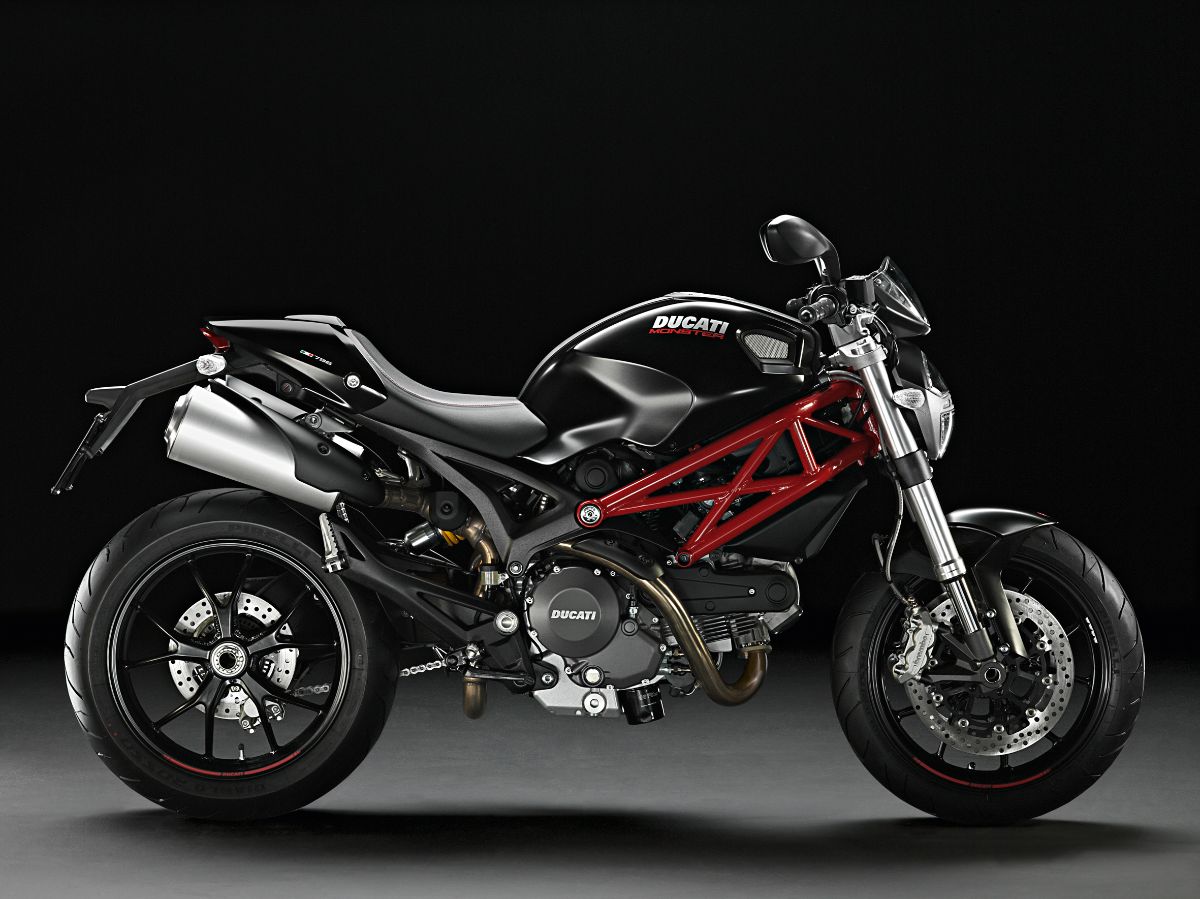
Ducati’s range has evolved beyond all recognition in the past 30 years, with 10 different model families including everything from adventure bikes to retro scramblers and, of course, exotic sportsbikes. The Streetfighter was reintroduced in 2020, paving the way for another all-new Monster.
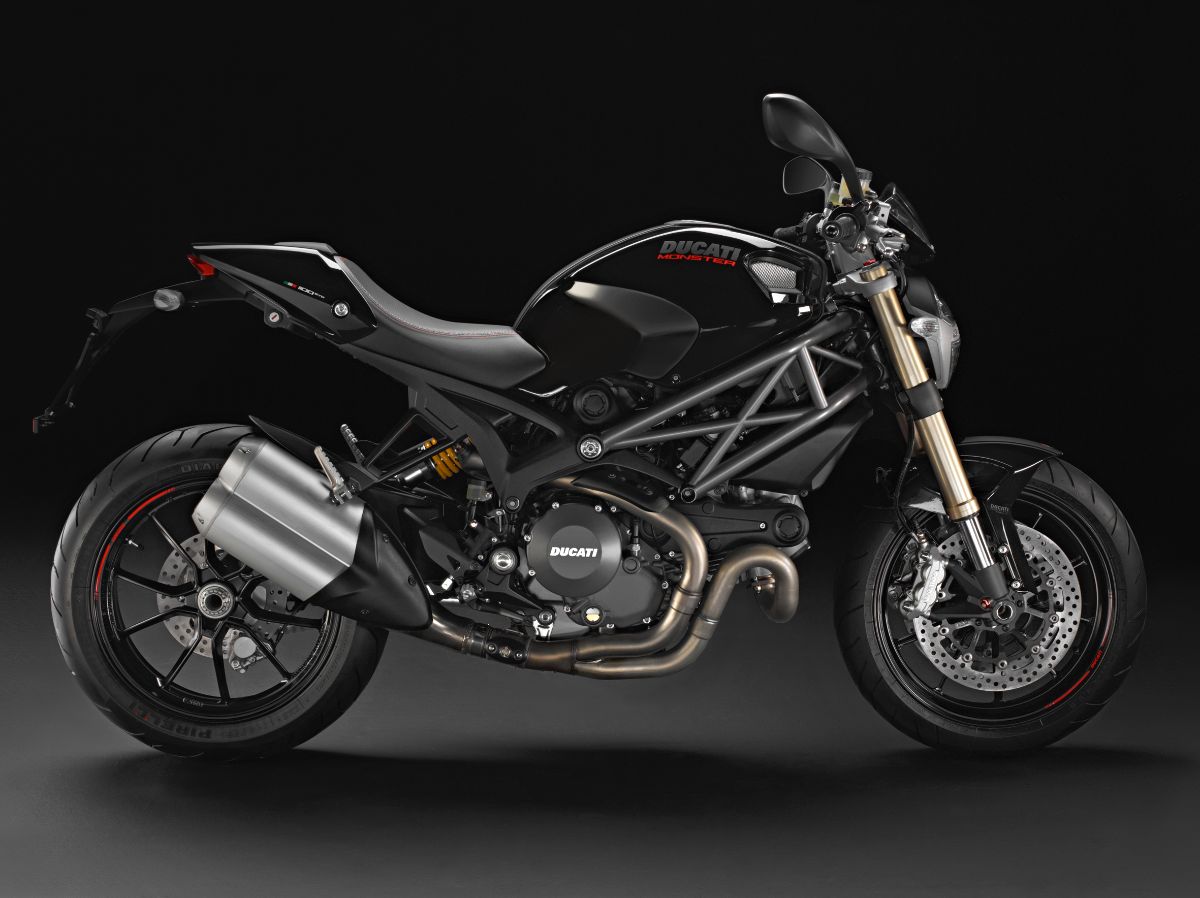
In many ways, the latest Monster goes back to its roots. The frame is based on that of the Panigale superbike, while the 937cc, four-valve engine is shared with a number of other models in the Ducati line-up. With 109bhp and some pretty fancy electronics, the latest Monster is anything but scary. Instead, it lines up against some fantastic naked motorcycles, like the Triumph Street Triple and Yamaha’s MT-09. New for 2023 is an even fancier SP version, dripping with high end components and even more style.
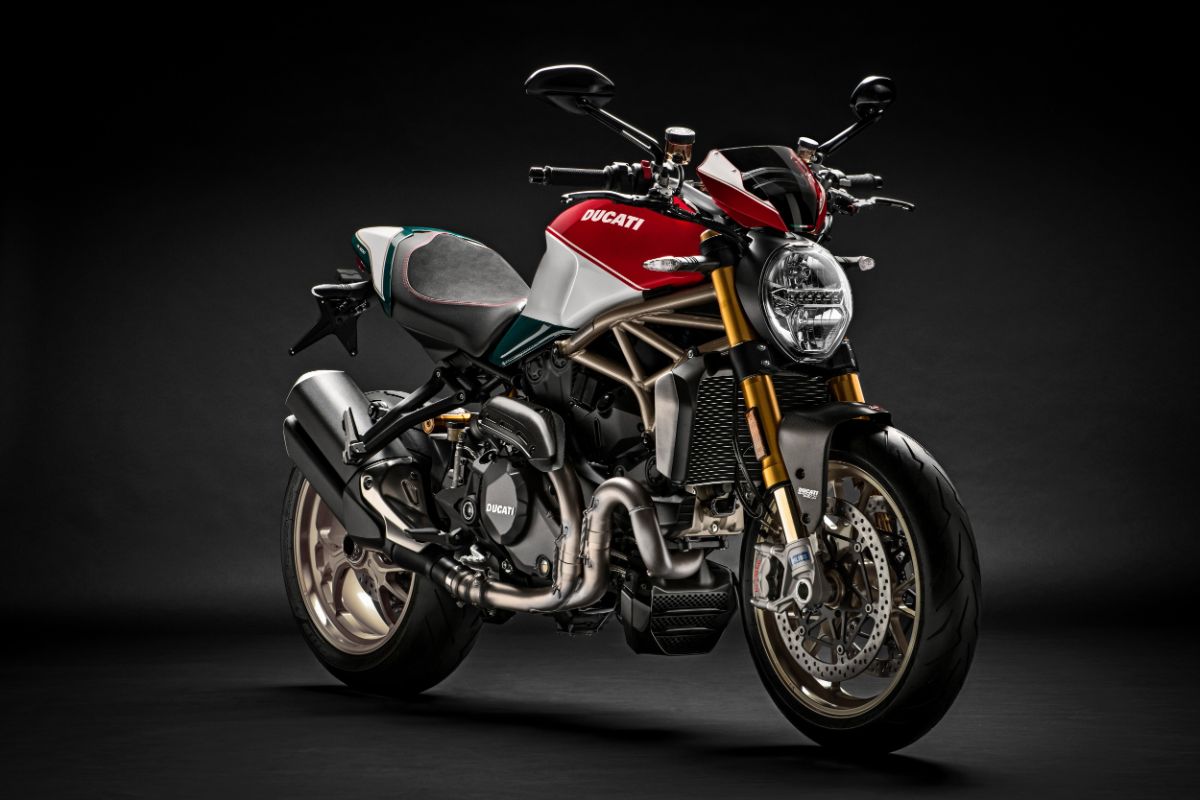
Ducati has sold over 300,000 Monsters over the years, making it the company’s best-selling model of all time. For a simple machine built up from bits taken from the Ducati parts bin, it sure has become one of the most important models in the history of modern day motorcycling.
